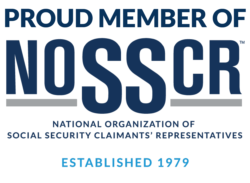June is PTSD Awareness Month: Honoring our clients with PTSD
by Eric Slepian
At our law firm, we work with clients who have post traumatic stress disorder, known as PTSD, a serious disorder based on severe symptoms that manifest from previous trauma like that experienced in combat or disaster or from abuse or violence. We work hard to help PTSD claimants gather evidence the Social Security Administration requires for purposes of Social Security Disability Insurance or Supplemental Security Income to prove that the PTSD is an established diagnosis that prevents meaningful work.
According to the American Psychiatric Association, about 3.5% of adults in the country have PTSD, and women have double the risk of men. PTSD can occur from direct traumatic experience, from trauma experienced by a loved one or from working in a profession that deals with traumatic situations.
Symptoms vary among individuals, but they generally sort into four distinct categories:
- Intrusive, distressing thoughts about the original event
- Avoidance of anything or anyone that brings back memories of the trauma
- Negative feelings about one’s self or others, including lack of interest in life
- Excessive reactions
Listed impairment
One way that a claimant with PTSD can establish disability is to show that the condition as it manifests for him or her meets or equals a listed impairment. SSDI and SSI regulations include a Listing of Impairments that are so severe that a finding of disability is automatic if the medical and other kinds of evidence show that the individual’s PTSD meets the criterion of the listing.
Nonmedical evidence might include statements from the claimant and their family, friends, colleagues and others about how PTSD symptoms limit the claimant’s daily functioning.
PTSD is one of the listed mental disorders under the category of trauma- and stressor-related disorders. From a high level, the PTSD listing requires medical proof of all of these:
- Exposure to “actual or threatened death, serious injury, or violence”
- “[I]nvoluntary re-experiencing” of the trauma such as through “intrusive memories, dreams, or flashbacks”
- Avoiding reminders of the trauma
- Mood and behavior disturbance
- Increased “arousal and reactivity … for example, exaggerated startle response, sleep disturbance”
In addition, the claimant must have “extreme limitation” of one or “market limitation” of two of these functional abilities:
- Understand, apply or remember information
- Interaction with others
- Concentration, persistence or keeping pace
- Adapting to demands and changes or managing emotions and behavior
An alternative to these limitations is to show that the PTSD is “serious and persistent,” having been medically established for at least two years, plus having treatment or a living structure that reduces symptoms, plus having difficulty adjusting to new demands and environmental changes.
Otherwise disabled
Even if a claimant with medically established, severe PTSD does not meet or equal the listing, they may still prove disability as the SSA defines it by showing that they cannot work when considering the claimant’s “residual functional capacity” (what they can do despite impairments), plus the impact of the claimant’s age, education and work experiences.



